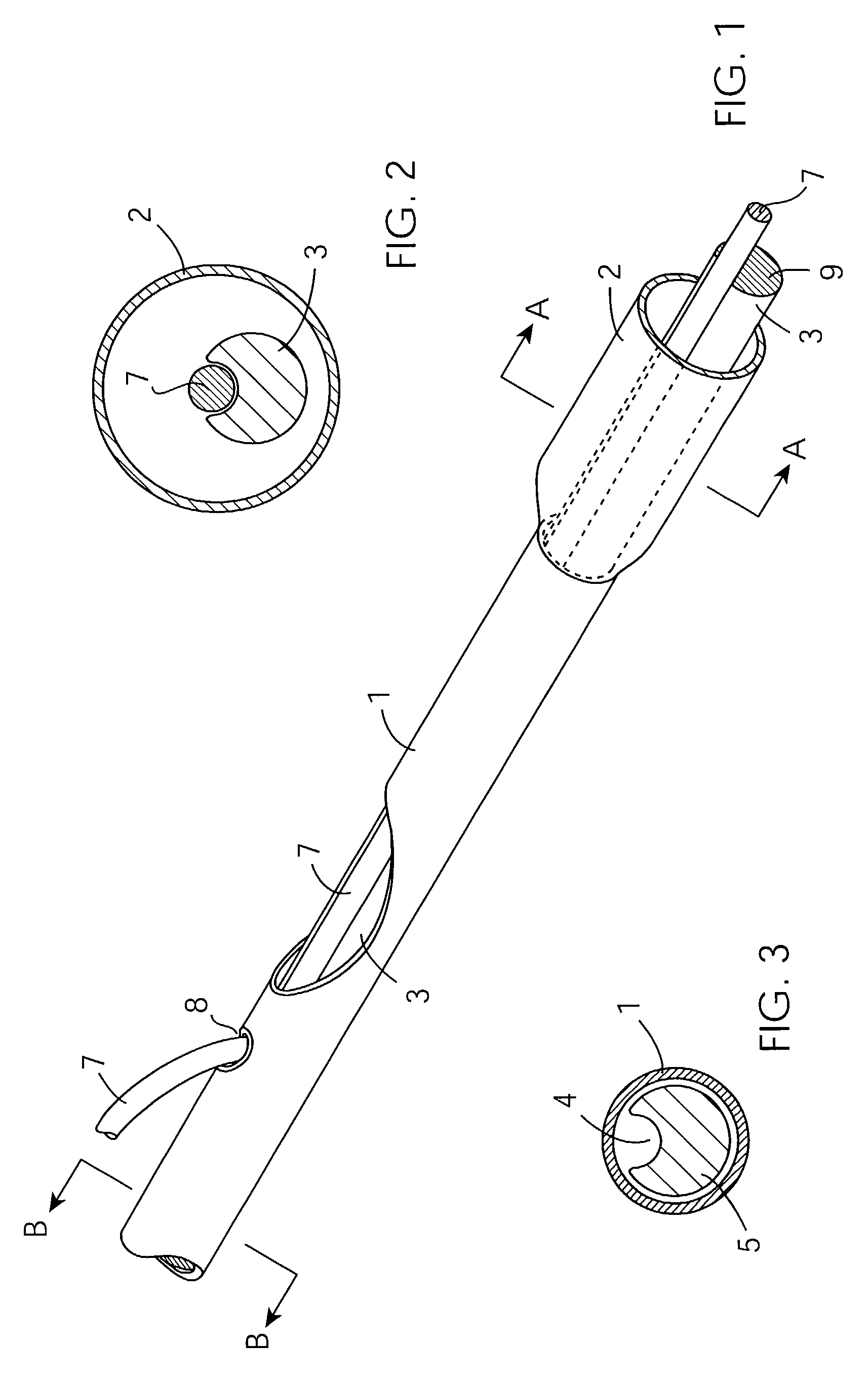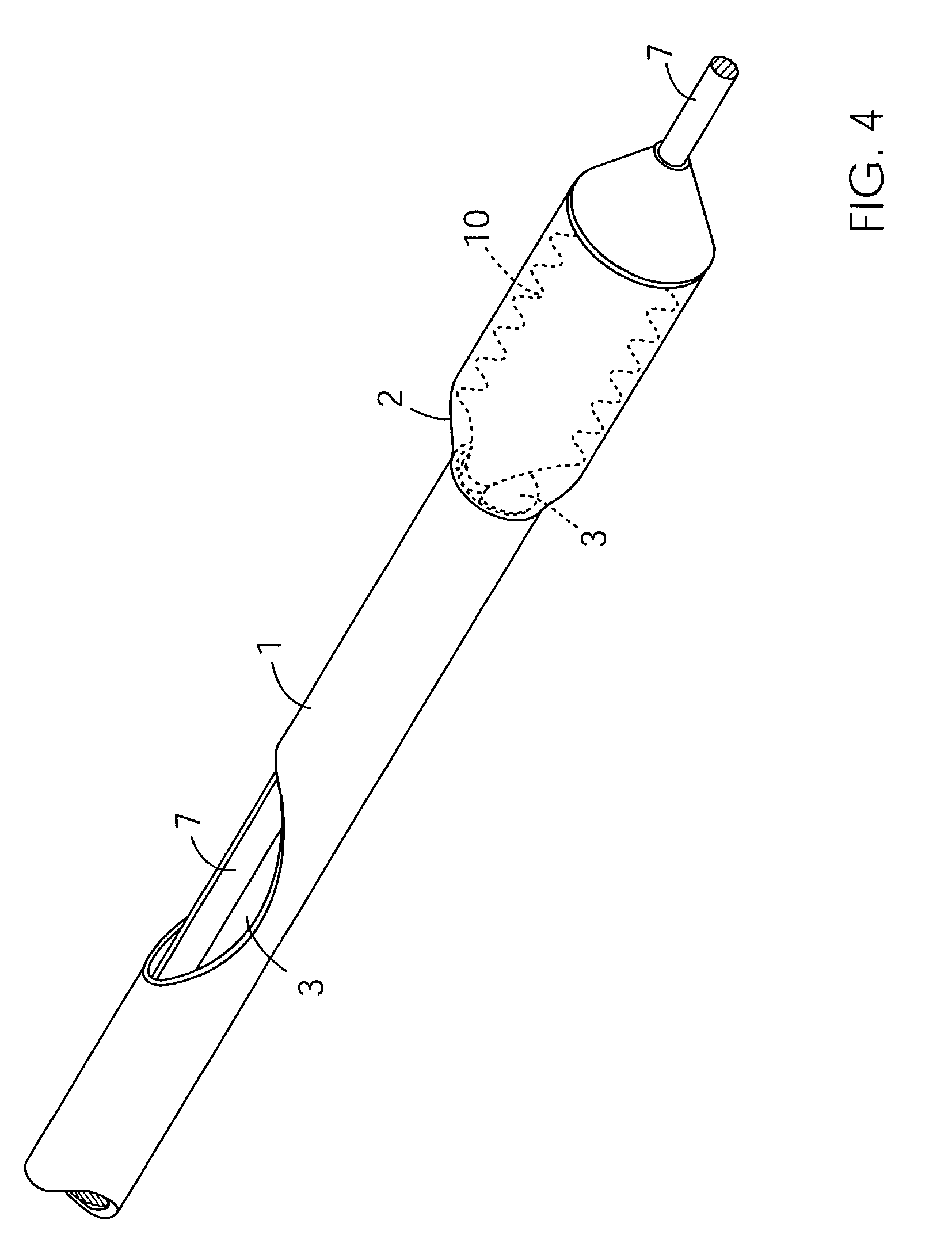Catheter for delivery and/or retrieval of a medical device
a medical device and catheter technology, applied in the field of catheters for delivery and/or retrieval of medical devices, can solve the problems of compromising the mechanical integrity of the shaft, affecting the safety of patients,
- Summary
- Abstract
- Description
- Claims
- Application Information
AI Technical Summary
Benefits of technology
Problems solved by technology
Method used
Image
Examples
Embodiment Construction
[0078]Referring to FIGS. 1 to 3 there is illustrated a catheter suitable for the delivery of a medical device such as a stent or a filter. The catheter has an outer shaft 1 with a distal end and a proximal end. The distal end comprises a pod 2 that provides a reception space for a medical device. The catheter has an inner shaft 3 comprising a solid rod 5, a surface guidewire pathway 4 for a guidewire 7. The inner shaft defines an abutment surface 9 at its distal end. The guidewire pathway 4 extends longitudinally and is configured so as to accommodate the guidewire 7. The abutment surface 9 from the pod 2 is configured so as to engage with a medical device to achieve deployment of the medical device from the pod 2. In FIGS. 1 to 4 the catheter is shown in a deployed configuration. In this deployed configuration the distal end of the inner shaft 3 is in an advanced position relative to the pod 2. The outer shaft 1 further comprises an exit port 8 where the guidewire exits the cathete...
PUM
 Login to View More
Login to View More Abstract
Description
Claims
Application Information
 Login to View More
Login to View More - R&D
- Intellectual Property
- Life Sciences
- Materials
- Tech Scout
- Unparalleled Data Quality
- Higher Quality Content
- 60% Fewer Hallucinations
Browse by: Latest US Patents, China's latest patents, Technical Efficacy Thesaurus, Application Domain, Technology Topic, Popular Technical Reports.
© 2025 PatSnap. All rights reserved.Legal|Privacy policy|Modern Slavery Act Transparency Statement|Sitemap|About US| Contact US: help@patsnap.com



